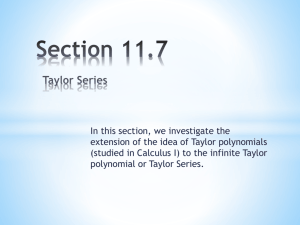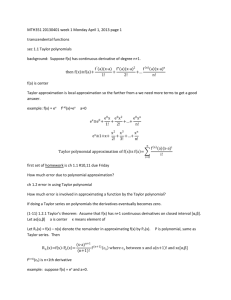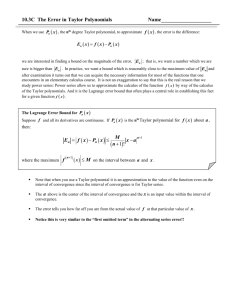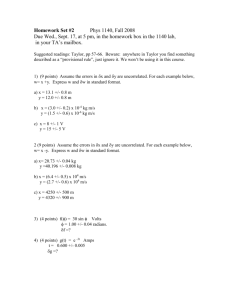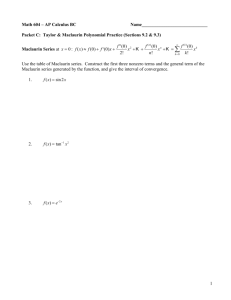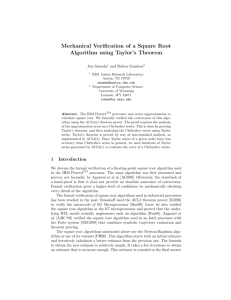Taylor Series Error Bound (LaGrange)
advertisement
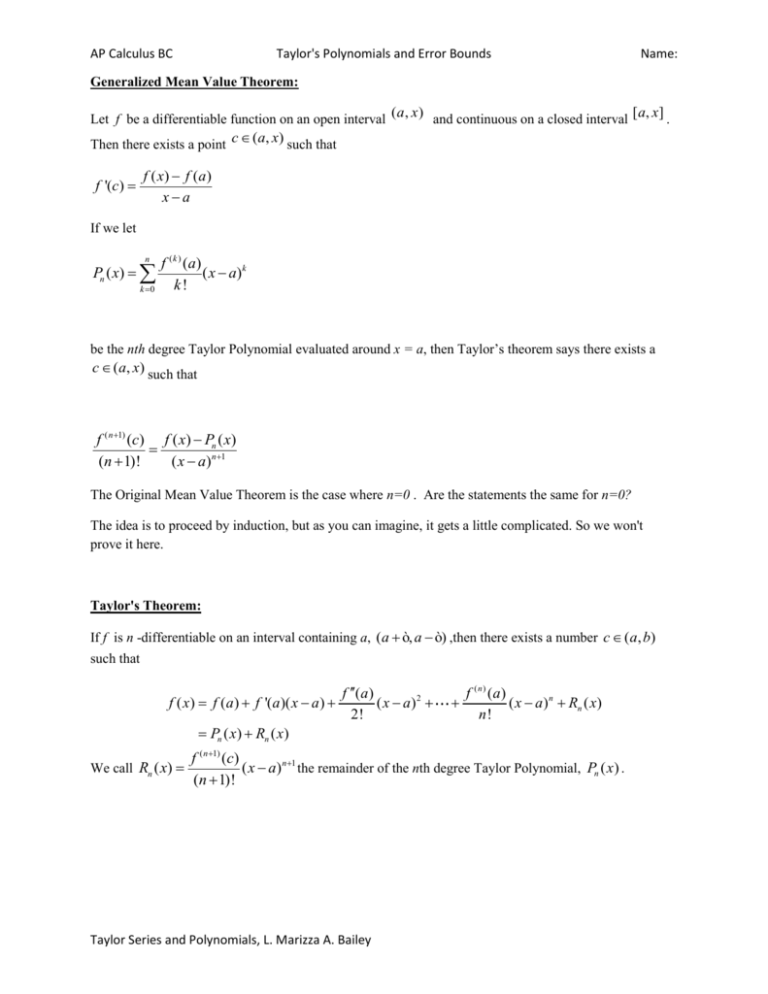
AP Calculus BC Taylor's Polynomials and Error Bounds Name: Generalized Mean Value Theorem: Let f be a differentiable function on an open interval ( a , x ) and continuous on a closed interval [a, x] . Then there exists a point c (a, x) such that f '(c) f ( x) f (a ) xa If we let n Pn ( x) k 0 f ( k ) (a) ( x a) k k! be the nth degree Taylor Polynomial evaluated around x = a, then Taylor’s theorem says there exists a c (a, x) such that f ( n1) (c) f ( x) Pn ( x) (n 1)! ( x a)n1 The Original Mean Value Theorem is the case where n=0 . Are the statements the same for n=0? The idea is to proceed by induction, but as you can imagine, it gets a little complicated. So we won't prove it here. Taylor's Theorem: If f is n -differentiable on an interval containing a, (a ò, a ò) ,then there exists a number c ( a, b) such that f (a ) f ( x) f (a ) f '(a )( x a ) ( x a)2 2! Pn ( x) Rn ( x) f ( n ) (a ) ( x a ) n Rn ( x) n! f ( n1) (c) We call Rn ( x) ( x a) n1 the remainder of the nth degree Taylor Polynomial, Pn ( x) . (n 1)! Taylor Series and Polynomials, L. Marizza A. Bailey AP Calculus BC Taylor's Polynomials and Error Bounds Name: The purpose of Taylor’s Theorem ln(x) is differentiable at x = 1 The Taylor Polynomial of degree 5 is a good estimation, but the error increases as x gets further away from 1. The error at 2 is given by The error at x = 2, is .109814. How can we estimate the error at each point? Taylor Series and Polynomials, L. Marizza A. Bailey AP Calculus BC Taylor's Polynomials and Error Bounds Name: LaGrange’s Error Bound The idea behind this uses Taylor’s Theorem, but the statement is as follows: If f ( x) has n 1 derivatives and | f ( n 1) (c) | M for all c (a, x), then the remainder |R n ( x) | M | x a |n 1 (n 1)! Practice Problem: [1999 BC 2] The function f has derivatives of all orders for all real numbers x. Assume f (2) 3, f '(2) 5, f ''(2) 3, and f '''(2) 8. a) Write the third degree Taylor Polynomial for f about x = 2 and use it to approximate f ( 1.5) . b) The fourth derivative of f satisfies the inequality f (4) ( x) 3 for all x in the closed interval [1.5, 2] . Use the Lagrange Error Bound on the approximation to f (1.5) found in part (a ) to explain why f (1.5) 5. c) Wrote the fourth degree Taylor Polynomial, P ( x ) for g ( x) f ( x 2 2) about x = 0. Taylor Series and Polynomials, L. Marizza A. Bailey


